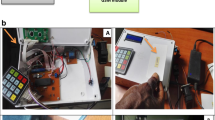Abstract
This paper describes a solution to the elderly collective needs of assistance for the easy access to any type of buildings. The main purpose of the project is to provide a system which contributes to make easier the life of those who have problems of autonomy in their life’s. Nowadays, this part of the population experiences some problems when they use the traditional keys to access their own homes. The project shows how to implement an access control system that will face up this question with new technologies and following ‘Design for all’ rules. The ICT’s (Information and Communications Technologies) used are biometry and Radiofrequency IDentification (RFID). This combination makes this work one of the most innovative in the state of the art. The user, which must carry with him a tag, will be identified by the RFID reader and then the system will verify the identity by biometric pattern. The biometric pattern used in this project is the palm’s veins.
Preview
Unable to display preview. Download preview PDF.
Similar content being viewed by others
References
ANEC (European consumer voice in standardisation), Consumer Requirements in Standardisation relating to the Information Society, pp. 4–7. ANEC2003/ICT/008rev (January 2005)
Elger, G., Furugren, B.: SmartBo-an ICT and computer-based demonstration home for disabled people. In: Proceedings of the 3rd TIDE Congress: Technology for Inclusive Design and Equality Improving the Quality of Life for the European Citizen, Helsinki, Finland (June 1998)
Chan, M., Bocquet, H., Campo, E., Val, T., Pous, J.: Alarm communication network to help carers of the elderly for safety purposes: a survey of a project. Int. J. Rehab. Res. 22, 131–136 (1999)
Albarracín, D.: Social dialogue over system for care of dependent people, Madrid (May 2005)
Boletín Oficial del País Vasco, number 2000110 (June 2000)
Asociación Española de Normalización y Certificación (AENOR), Normas UNE 139801 EX y UNE 139802 EX
Author information
Authors and Affiliations
Editor information
Editors and Affiliations
Rights and permissions
Copyright information
© 2009 Springer-Verlag Berlin Heidelberg
About this paper
Cite this paper
García, B., Méndez, A., Ruiz, I., Vicente, J. (2009). Biometric Access Control System for AAL. In: Omatu, S., et al. Distributed Computing, Artificial Intelligence, Bioinformatics, Soft Computing, and Ambient Assisted Living. IWANN 2009. Lecture Notes in Computer Science, vol 5518. Springer, Berlin, Heidelberg. https://doi.org/10.1007/978-3-642-02481-8_123
Download citation
DOI: https://doi.org/10.1007/978-3-642-02481-8_123
Publisher Name: Springer, Berlin, Heidelberg
Print ISBN: 978-3-642-02480-1
Online ISBN: 978-3-642-02481-8
eBook Packages: Computer ScienceComputer Science (R0)




